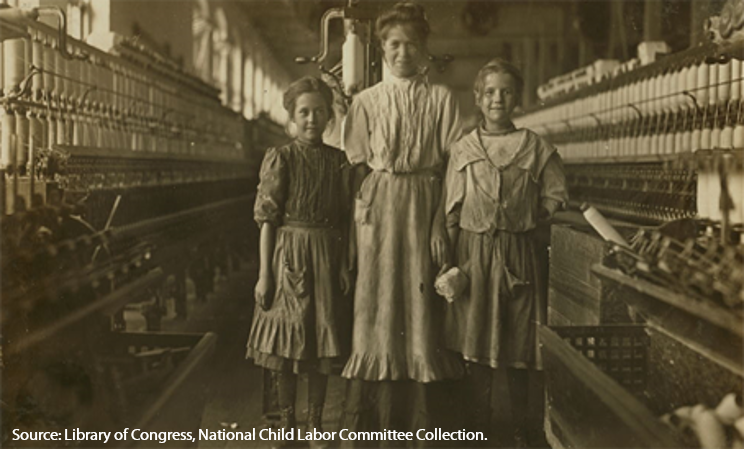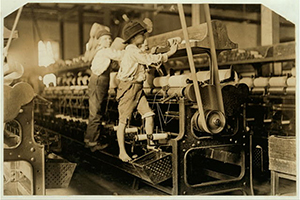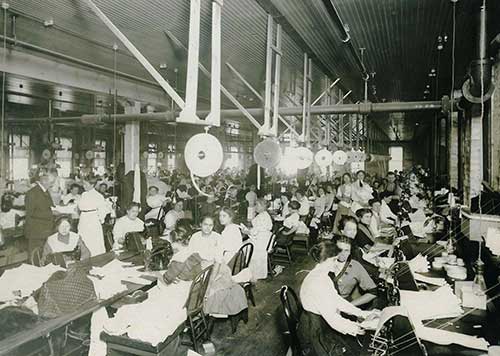Adults worked long and hard and sometimes they were injured as a result of their jobs. During the Gilded Age people who worked in factories had only moderate health benefits in case of accidentshad to work long hourshad many opportunities for job promotionswere often taught new skills.
Compared to today workers were extremely vulnerable during the Gilded Age.
. During the gilded age people who worked in factories had only moderate health benefits in case of accidents. As workers moved away from farm work to factories mines and other hard labor they faced harsh working conditions such as long hours low pay and health risks. Included in the list of so-called robber barons are Henry Ford Andrew Carnegie Cornelius Vanderbilt and John D.
Had many opportunities for job promotions. Compared to today workers were extremely vulnerable during the Gilded Age. Labor In The Gilded Age.
The wages they earned were barely enough to support their families. During the Gilded Age the shift to a system of mass production that paid workers low wages affected a. This era created many new job opportunities than before.
As workers moved away from farm work to factories mines and other hard labor they faced harsh working conditions such as long hours low pay and health risks. Immigration and other factors lead to a boom in industrial labor and thus also to an increase in dissatisfaction with wages and working conditions. The wages they earned were barely enough to support their families.
Were often taught new skills. During the Gilded Age a growing number of Americans worked in urban areas in manufacturing factories. They worked 10-hour shifts six days a week.
From those 117 million immigrants106 million of those immigrants came from Europe which made up 90. Immigrants wait in line to enter Ellis Island. Safety was a large issue.
Had to work long hours. As workers moved away from farm work to factories mines and other hard labor they faced harsh working conditions such as long hours low pay and health risks. The Gilded ages is the period between 1860s to 1896 this was directly after the civil war its part of the reconstruction process and many americans started moving into the urban areas and working in the factories usually working 10 hours shifts 6 days a week for a salary that could barely support a family.
Men women and children b. A robber baron is a term used frequently in the 19th century during Americas Gilded Age to describe successful industrialists whose business practices were often considered ruthless or unethical. During the Gilded Age there were around 117 million people that came to America.
Factory work was very dangerous and it was difficult if not impossible to hold factory owners responsible for deaths and injuries. Had to work long hours. Had many opportunities for job promotions.
During the Gilded Age a growing number of Americans worked in urban areas in manufacturing factories. MARK ME AS BRAINLIEST AND GIBE ME POINTS. During the Gilded Age a growing number of Americans worked in urban areas in manufacturing factories.
The Gilded Age can be characterized as an era of strikes. Working conditions were very poor during the era of The Gilded Age. 25-35000 deaths and 1 million injuries per year occurred on industrial jobs.
Compared to today workers were extremely vulnerable during the Gilded Age. Were often taught new skills. A example of a job in the gilded age that had terrible working conditions was the triangle shirtwaist factory where workers were lock in the sweatshops for 9 hours a day to manufacture a special kind of dress.
During the Gilded Age there were a large number of immigrants that were coming to North America. Children and women worked in factories and generally received lower pay than men. Both men and women.
Had only moderate health benefits in case of accidents. They worked 10-hour shifts six days a week. During the Gilded Age people who worked in factories had only moderate health benefits in case of accidents.
The number of women who now had actual jobs had increased drastically. Adults worked long and hard and sometimes they were injured as a result of their jobs. Children and women worked in factories and generally received lower pay than men.
MARK ME AS BRAINLIEST AND GIBE ME POINTS. Men working in a textile factory in 1921. On march 25 1911 the factory caught on fire and many workers were trapped on the 8th floor.
In the Gilded age or the start of the industrial era women and children were forced to leave their homes and try and get jobs in factories that were fit for them. During the Gilded Age people who worked in factories b. They worked 10-hour shifts six days a week.
By the year 1900 38 of the American population lived in cities and these people usually had urbanized jobs at factories. During the Gilded Age people who worked in factories had to work long hours. Children and women worked in factories and generally received lower pay than men.
Adults worked long and hard and sometimes they were injured as a result of their jobs. The wages they earned were barely enough to support their families.

Saqs For Apush Topic 6 7 Labor In The Gilded Age By Peter Paccone Medium

Factory Working Conditions For Both Men And Women During This Time Were Atrocious Picture Show Historical Images Wwi
Women And Children The Gilded Age Urbanization
Immigrants In The Workforce Treatment Of Immigrants During The Gilded Age

History Of Child Labor In The United States Part 1 Little Children Working Monthly Labor Review U S Bureau Of Labor Statistics



0 comments
Post a Comment